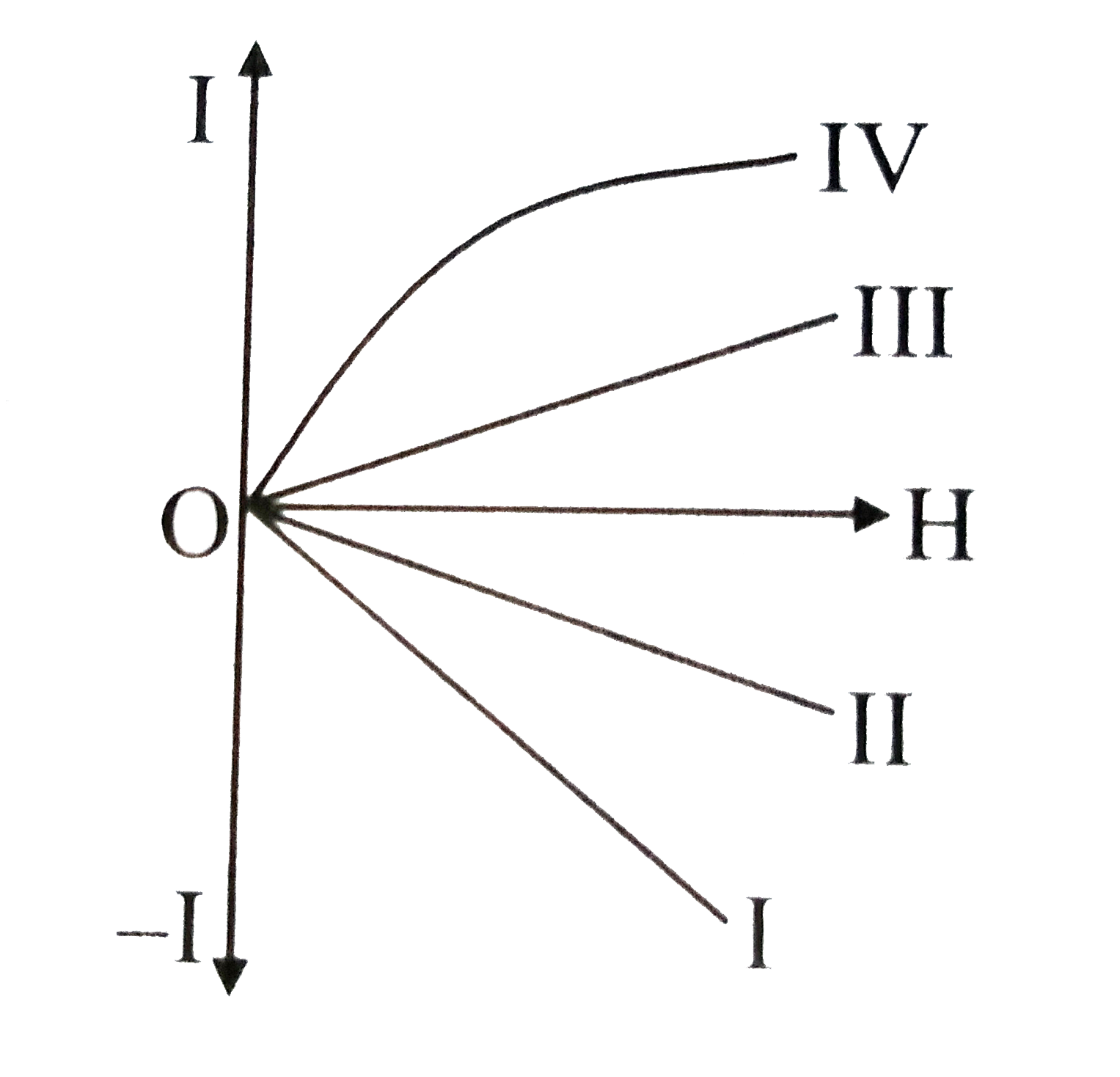The correct M-H curve for a paramagnetic material at a constant temperature (T) is represented by
A

B

C

D

Video Solution
Text Solution
The correct Answer is:A
Since instesty of magnestisation (M) of a paramagentic material is given by
M=CBT=Cμ0HTasCμ0Tis constant
Then,MαH
Hence, the M-H curve will be a straight line with the slope, Cμ01T
|
Topper's Solved these Questions
- MAGNETISM AND MATTER BOOK - NCERT FINGERTIPSCHAPTER - MAGNETISM AND MATTER EXERCISE - Permanent Magnets And Electromagnets
4 Videos
- MAGNETISM AND MATTER BOOK - NCERT FINGERTIPSCHAPTER - MAGNETISM AND MATTER EXERCISE - Higher Order Thinking Skills
8 Videos
- MAGNETISM AND MATTER BOOK - NCERT FINGERTIPSCHAPTER - MAGNETISM AND MATTER EXERCISE - Magnetisation And Magnetic Intensity
11 Videos
- ELECTROSTATIC POTENTIAL AND CAPACITANCE BOOK - NCERT FINGERTIPSCHAPTER - ELECTROSTATIC POTENTIAL AND CAPACITANCE EXERCISE - Assertion And Reason
15 Videos
- MOVING CHARGES AND MAGNETISM BOOK - NCERT FINGERTIPSCHAPTER - MOVING CHARGES AND MAGNETISM EXERCISE - Assertion And Reason
15 Videos
Similar Questions
Knowledge Check
The correct I - H graph for a paramagnetic material will look like .
A B
B C
C D
D
The susceptibility of a paramagnetic material is x at 27∘c at what temperature will its suceptibility be x3
A327∘CB500∘CC627∘CD427∘CThe susceptibility of a paramagnetic material is Kat 27∘C. At what temperature will its susceptibility be K/2?
A600∘CB287∘CC54∘CD327∘C
The magnetic susceptibility (x) of a paramagnetic material changes with absolute temperature (T) as
View SolutionThe magnetic susceptibility of any paramagnetic material changes with absolute temperature T as
View SolutionThe variation of PV with V of fixed mass of an ideal gas at constant temperature is graphically represented by the curve
View SolutionThe magnetic susceptibility of ant paramagnetic material changes with absolute temperature T as:
View SolutionThe magnetic susceptibility of ant paramagnetic material changes with absolute temperature T as:
View Solution

